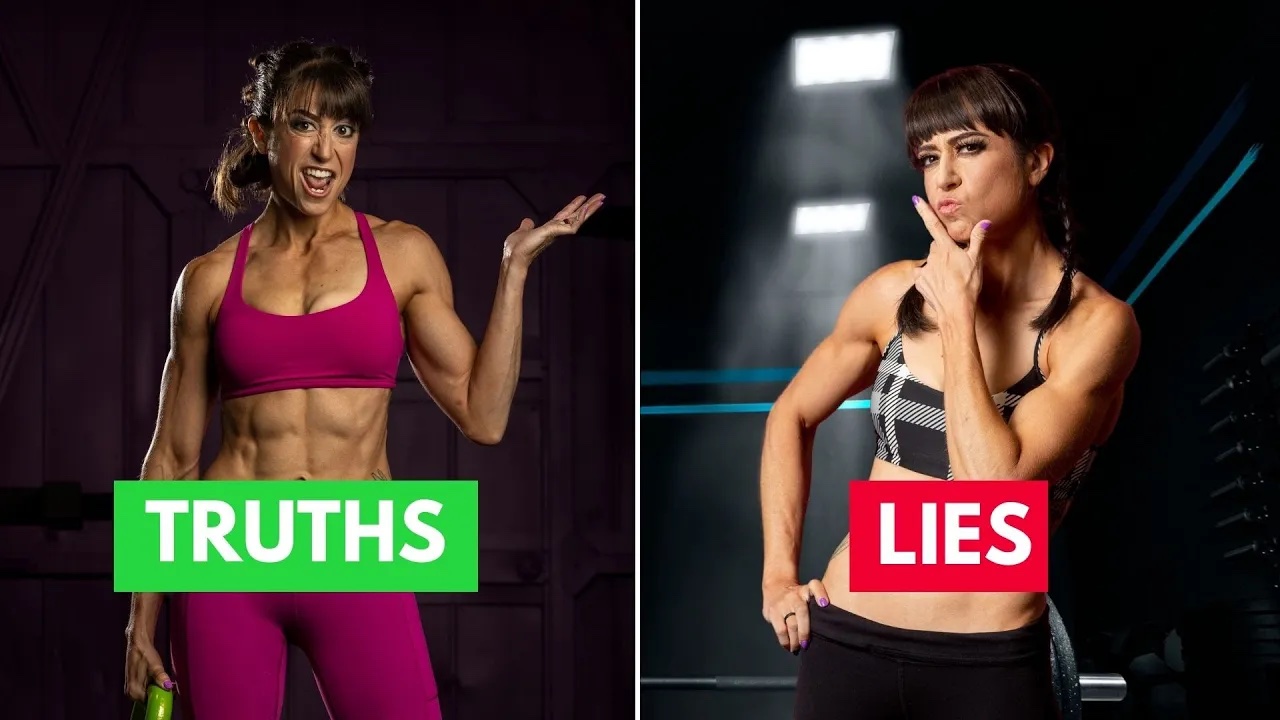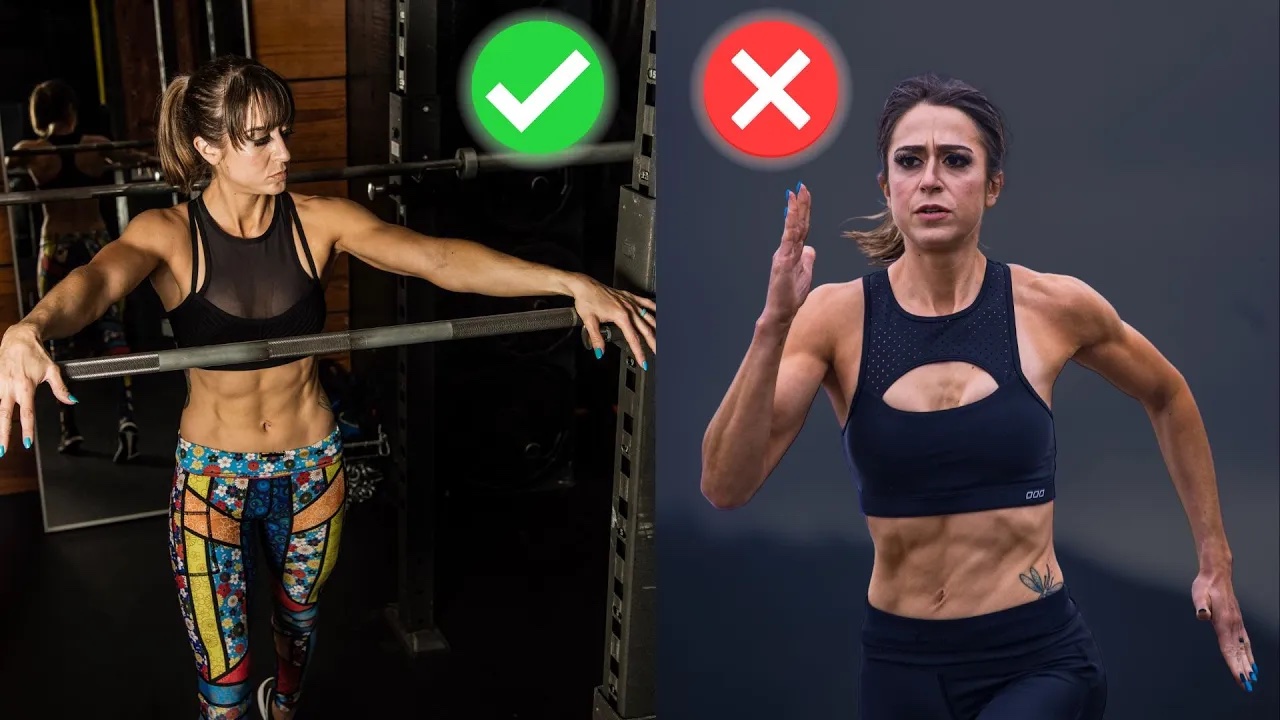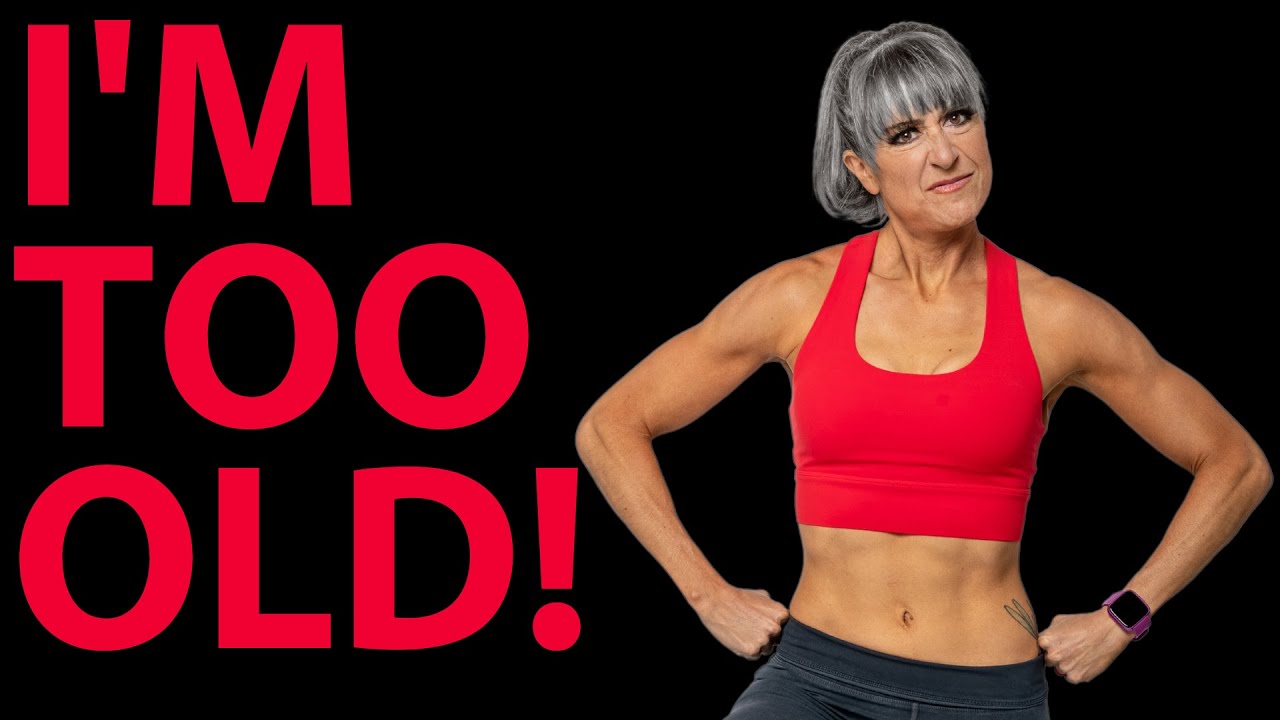
15 Tips to Build Muscle
Struggling to see the muscle gains you want?
Stop blaming your age.
Stop blaming your genetics.
While these things impact how we may design our workouts and diet to help us achieve results, they are within our power to address.
Because the real reason we aren’t seeing the results we want is because a system is off.
There isn’t one magic move or food that will make everything work.
It’s all the components of your plan that work together.
An amazing move or workout routine done with improper fueling will lead to lackluster results.
A perfect diet can’t create progression in your training.
So if you aren’t seeing results, stop blaming things outside your control and instead take a step back to look at your lifestyle and make small adjustments to meet yourself where you are at so your lifestyle is moving you forward.
Here are 15 reasons why I often see clients not achieving the muscle gains they want.

And I will tell you…some of these you are mentally going to resist because they are things that “worked” in the past.
They may have been key to us achieving our weight loss or fat loss goals even.
But what works to get us to one goal may not only not work to get us to the next…
It may even hold us back!
Not to mention, our body and needs change over time.
And this actually brings me to the very unsexy first reason we don’t see the muscle gains we want…
We think it should be easier to see results because we’re an experienced exercise.
While you may feel it should be “easier” to see results because you’re an advanced worker-outer, this will actually make your progress SLOWER.
So recognize that change takes time and the more you have a foundation already built, the more small tweaks can have an impact.
You’ve adapted to more. It’s why you’ve gotten stronger and fitter.
But this also means that details matter more!
Get ready to embrace changes if you want to focus on those muscle gains…
And one of the surprisingly most common reasons I see clients not achieving the muscle gains they want is…
They’re not eating enough.
There can be a slight fear about eating more when you’ve just lost weight.
This is why increasing your calories after a weight loss phase has to be a slow process of even just 100 calories added to your daily intake and maintained for weeks before further increases.
You need to retrain your body to eat more.
But in this process of eating more, you are supplying your body with the extra energy it needs to not only train hard to build muscle but also support that muscle growth.
Not only does increasing muscle mean you need to eat more to maintain that newly added muscle, but there are other changes with increasing calories that actually mean your body uses more calories even at rest.
If you are struggling to build muscle, it may be time to increase your calories even if you aren’t feeling hungry.
We have to remember that hunger cues are partly TRAINED from even previous dieting practices.
So to build muscle, track and increase those calories slowly.
You can’t stay in a calorie deficit and efficiently build muscle especially if you’re at your desired leanness level. And even as you then see the scale creep up with muscle being gained, you may need to increase your calories further.
You may also have to let go of specific meal timings – such as fasted training.
The more advanced a trainee you are, the harder it gets to build muscle.
And as we get older, we are less able to build and retain lean muscle as well.
These aren’t excuses, they’re just facts that can and need to be addressed.
And besides making sure you’re eating enough, this may mean adjusting your meal timing.
The fasted training that used to work, may not be giving you the immediate fuel your body needs nor helping you create that anabolic environment for muscle growth.
And I say this as a person who really loves to train fasted at times. BUT…what works for one goal or stage of life doesn’t always work for another.
To be able to train harder and help your muscles recover better, you may need that pre-workout snack with especially some carbs. Having full energy stores can be key.
So consider even just breaking your fast with a small snack prior to your training session if you really want to see those muscle gains.
Now you may be thinking, “No! I’m low carb! I’m not giving up fasting and adding more carbs!”
But this carbphobia may be holding you back.
While low carb can be helpful for some during a weight loss phase, especially during menopause, carbs really do help create that hormonal balance and anabolic environment for muscle growth.
They give you the immediate fuel your body otherwise has to work hard to get from fats or protein so you can truly push hard and work at the intensity you need to create progression in your training.
Because we NEED to feel energized if we want to train hard to build muscle. Working at a zapped 100% intensity just isn’t going to drive growth efficiently especially if we’ve trained for decades and have adapted to a great training stimulus.
Before I move into some workout mistakes often holding clients back, I wanted to highlight one more nutritional piece which is so key…
PROTEIN.
Our body is made up of protein and the protein we consume isn’t just used for building muscle.
If we don’t prioritize getting enough, not only will our muscles not have the fuel they need to rebuild and grow, but our hard training sessions may actually be leading to muscle loss, especially the more cardio they are (which I’ll touch on next).
Because our muscles are also our biggest reserve of amino acids. So if your body feels it needs amino acids for other functions or to recover from your training sessions, you may actually be turning to your muscle…
Which completely defeats the purpose of your training sessions in the gym.
So make protein at each meal you eat a priority. And don’t fear increasing protein portions per meal to even up to 40 grams.
This can be key as we are less able to utilize protein as efficiently as we get older so getting MORE is needed to create the same stimulus for muscle growth.
Now going back to why cardio may be hindering your muscle gains…
There are two issues I see popping up with clients and how they include cardio in their workouts…
One they’re putting cardio first in the session.
And two, they’re simply doing too much steady state cardio.
If you love your cardio workouts, your long bike rides or runs, I’m not telling you not to do them. But you also need to know the COST of these sessions if you’re frustrated by not building muscle.
Because that steady state cardio at that intensity greater than walking is more catabolic to muscle mass and will often leave you depleted for your strength sessions.
It’s kind of like taking one step back for every two steps forward.
You can still move forward, you’re just making it harder and really have to tweak your fueling and other strength workouts to account for that.
So if you want the fastest results, cut back on your steady state cardio workouts and mileage for a bit, don’t turn your strength workouts into cardio by cutting out rest and time any cardio you do on days between that won’t fatigue you for future workouts or AFTER your strength session.
While you may put cardio first in your day if you’re training for a race, what you put first gets you when you’re freshest.
You want to be freshest for your lifts!
And being fresh and energized for each session is key because you need to create true progression in your strength workouts to see results.
Driving muscle growth means you’re going to feel uncomfortable, both mentally and physically.
You need to push hard and even at times push to a true failure. You need to keep progressing moves whether through loads, tempos, variations, perfection in form, volume…week over week.
This is incredibly taxing at times and may lead to you needing a deload week at points because you’re even just mentally feeling burned out from the strain.
But too often I see clients just pushing till it feels “hard” but never really pushing their comfort zone.
They stop at 12 reps not because they had to, but because it felt hard enough and that was the top end of the reps given.
NOPE! You’ve got to at points fail with a weight or variation to truly test those limits if you want to build muscle faster and know your pushing!
So get ready to feel uncomfortable.
But just note…uncomfortable doesn’t just mean feeling destroyed or sore from every workout.
Actually constantly feeling beat down or constantly seeking to be sore may be why you aren’t seeing the muscle gains you want.
Because soreness isn’t an indicator that a workout was hard enough or that we’re going to see better muscle gains.
While muscle tissue damage is one driver of muscle growth and can lead to muscle soreness, it isn’t the only driver of muscle growth.
And if you’re following a clear workout plan and progressing week over week, you shouldn’t always be sore from the calculated progress.
Honestly often we are so sore because something isn’t CORRECT in our plan.
We’re…
- Not fueling well so we’re not truly rebuilding from our training.
- We’re not including proper recovery work so that our muscles have that time to repair and rebuild stronger.
- We’re not creating a clear progression that we repeat week over week but just randomly stringing together new things. And new alone will make you sore while actually not driving that progressive overload to see results.
So stop just seeking to be sore and instead follow a clear plan where week over week you can make incremental changes.
And jumping around too much is a very common mistake I see clients making.
It’s easy to want to chase something better, especially when we see all these new and exciting things on social media promising faster results.
But we get good at what we consistently do.
We need to have a weekly schedule we repeat week over week so we can truly track progress.
Don’t allow yourself to get distracted. Create that clear plan and repeat it, working in new things over time.
But constantly jumping around keeps you stuck starting over again and again never achieving the build needed for results.
Now here’s the important flip side to that…you also can’t get so married to one type of training, one type of move that you don’t at points change things up.
At some point, you can’t just keep adding weight.
At some point you do need a new training technique or exercise to create progression through the same but different.
So set those end dates where you adjust your training progression over just continuing to cling to what used to work.
Just because supersets worked in the past doesn’t mean 6-12-25 may not now be better since you’ve adapted to that other training stimulus.
So often we don’t see the opportunity in little tweaks like that, especially as we are more advanced and we can’t just keep adding loads to certain moves or training more frequently or for longer!
And one of those tweaks I see too often ignored for muscle building, and too often overused for fat loss, is isolation moves.
If you have a specifically stubborn area, you need to hone in on it.
While compound moves are amazing to help you burn more calories and be efficient in your training sessions while lifting more weight to drive muscle growth, areas that you struggle to gain in need the extra attention.
Isolation moves can help you really hone in and work an area to fatigue, recruiting more muscle fibers to help create that stimulus for muscle growth.
Isolation moves can be included in so many different ways whether you want to pre-fatigue a muscle, tiring out a harder to fatigue muscle slightly before a compound lift to be able to use lighter loads while working to failure…
Or use them to end your workout and fully fatigue one of the muscles worked during compound exercises earlier on.
But don’t ignore the importance of isolating stubborn muscles if you want to build muscle.
(If you’re looking for amazing workouts to help you build muscle and lose fat, check out my Dynamic Strength program…sorry shameless plug for these fun workouts you can do anywhere!)
Now the final reason I see clients not achieve the muscle gains they want is not valuing quality over quantity with everything they do.
So often we just seek to do MORE, use more supplements, implement more techniques, add on more we have to do or manage into our diet and workout plans.
Instead we need to get good at those basics.
We need to have that solid plan we follow and set end dates so we can assess and tweak.
And we need to focus on really perfecting the habits that we do.
Focus on the quality of your reps and what you feel working in your workouts.
Focus on hitting your macros consistently.
Don’t get distracted by supposedly magic pills or fancy tools that only add complexity.
Stay focused on your plan and get really good at doing it, improving week after week.
And while I know I gave you 15 reasons why you may not be seeing results…Don’t feel like you need to address all of them, especially all at once.
Find just ONE that you can adjust and dial that in first. Focus on getting really consistent with the change and then build off of that.
It will amazing you how simplifying and dialing in even just one of these habit changes with a focus on quality leads to faster muscle building results than you thought possible no matter your age!
For more workout and nutrition tips, join my newsletter!





